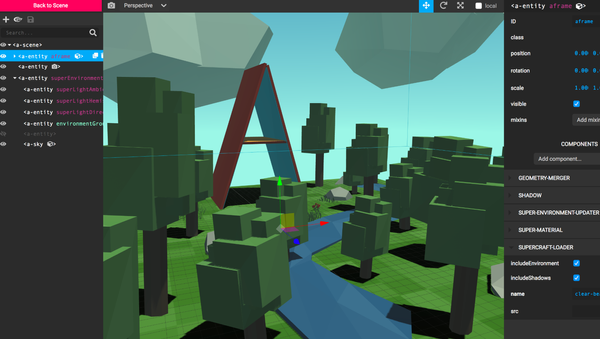Ghost CMS: A Brilliant Idea Haunted by Serious Problems
Table of Content
Ghost, the lightweight and beautifully designed content management system (CMS), has carved out a niche in the crowded world of publishing platforms. Launched in 2013 as an open-source alternative to WordPress, Ghost set out to deliver a fast, minimalist platform focused on blogging and simplicity.
With backing from a successful Kickstarter campaign and the establishment of the non-profit Ghost Foundation, it promised to be a CMS for creators, by creators.
Fast forward to 2024, and while Ghost has made strides in providing a polished interface and stellar speed, it’s becoming increasingly clear that the platform is buckling under the weight of its own shortcomings. Specifically, when it comes to backup, migration, and media management, Ghost has left many users stranded in a purgatory of technical headaches.
The Good, the Bad, and the... Nightmare
1- The Good: Why Ghost is Loved
Ghost has always been about speed, simplicity, and focus. It's written in JavaScript and powered by Node.js, offering a modern tech stack that appeals to developers and content creators alike. With its sleek design, easy-to-use editor, and blazing performance, Ghost has won over thousands of users.
Ghost's business model is also commendable. Instead of bombarding users with ads or collecting data, the Ghost Foundation sustains itself through its managed hosting service, Ghost(Pro). This approach aligns with their open-source ethos and has earned the respect of the tech community.
In 2022, Ghost reported crossing $5 million in annual revenue. They’ve also seen growth in adoption by major media outlets and independent bloggers looking for a WordPress alternative.
But while the vision is inspiring, the execution leaves much to be desired.
2- The Bad: Backup and Migration Woes
For all its modern flair, Ghost is a nightmare when it comes to backup and migration, especially for long-term users with large sites. The export and import processes, supposedly simple, are riddled with limitations.
- JSON Export Problems:
The JSON export feature, intended to let users back up posts, tags, and settings, often breaks under pressure. For sites with thousands of posts, the export file can become unwieldy (easily exceeding 150 MB), and importing it back into a new Ghost installation is like trying to fit an elephant through a doorway. - Media Management? What Media Management?
Ghost’s Achilles' heel has always been its lack of a proper media library. Photos and files are stored in a flat directory structure with no way to manage or organize them. Worse still, many images become "orphaned" — uploaded files that are no longer connected to posts. This creates bloat, as users are forced to manually sift through gigabytes of unlinked media. This can save a hell of GBs. - MySQL Backup Shenanigans:
When the JSON export fails (which it often does), users are left with one option: backing up the MySQL database and restoring it to a fresh installation. While this sounds straightforward, it’s anything but.
Migrating database entries into a new Ghost install often leads to a litany of errors, broken links, and, in some cases, corrupted posts. - Failed Imports:
Even if you manage to create a valid JSON export, importing it into another Ghost installation is hit-or-miss. Files larger than 20 MB are outright rejected by the Ghost admin interface.
Even the command-line import tool struggles with large files, leaving users to resort to splitting the JSON file manually — a tedious and error-prone process.
The Nightmare: Migration to WordPress
For users looking to escape Ghost, moving to WordPress is technically possible but far from painless. Services like WP Ghost Importer offer some relief by converting Ghost JSON files into WordPress-compatible formats.
However, even this process requires splitting large JSON files into smaller chunks, processing each one separately.
Migrating media files? Good luck. Without proper URLs in the JSON export, reconnecting images to posts in WordPress is an exercise in futility.
Are Ghost Developers Listening?
For years, Ghost users have begged for proper media management and scalable backup solutions. Yet these issues persist, leaving users frustrated and questioning whether the platform is suitable for long-term use.
While Ghost continues to innovate with features like membership and subscription tools, these additions feel like putting a golden crown on a crumbling foundation.
What good are fancy features if users can’t even backup their data reliably?
The Future of Ghost
Ghost remains a unique and powerful CMS, but its lack of attention to fundamental user needs is costing it goodwill.
As more users face issues with backups, migrations, and media management, the platform risks losing ground to competitors like WordPress, Hugo, and even open-source newcomers.
If the Ghost team wants to secure their platform’s future, they need to:
- Fix Backup and Migration:
Develop robust, scalable tools for exporting and importing content, regardless of size. - Build a Media Library:
Give users a way to manage, organize, and clean up their media files. - Communicate Better:
Acknowledge these longstanding issues and provide clear timelines for addressing them.
Until then, Ghost users — myself included — are stuck in a limbo where every upgrade feels like a gamble, and every migration feels like a nightmare. For a CMS that prides itself on simplicity, that’s a paradox Ghost can’t afford to ignore.
Citations and Links:





